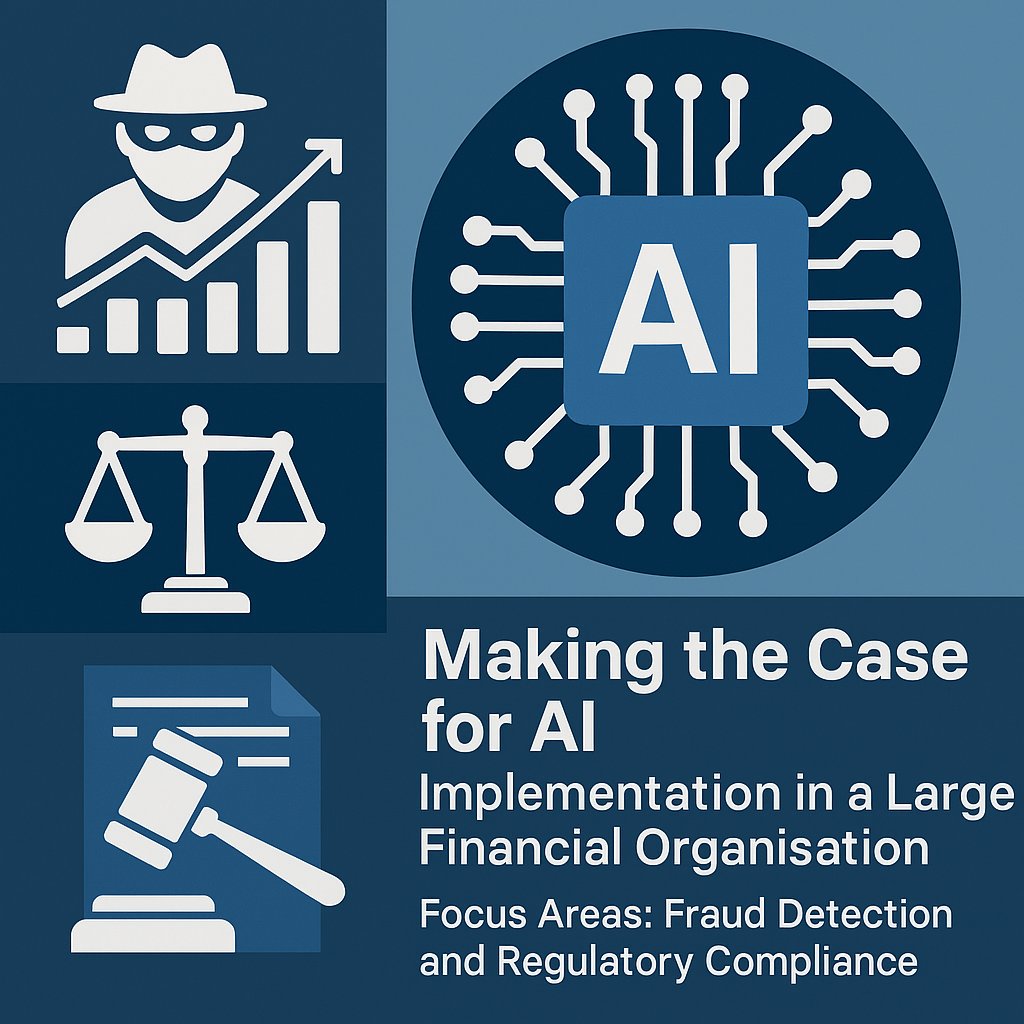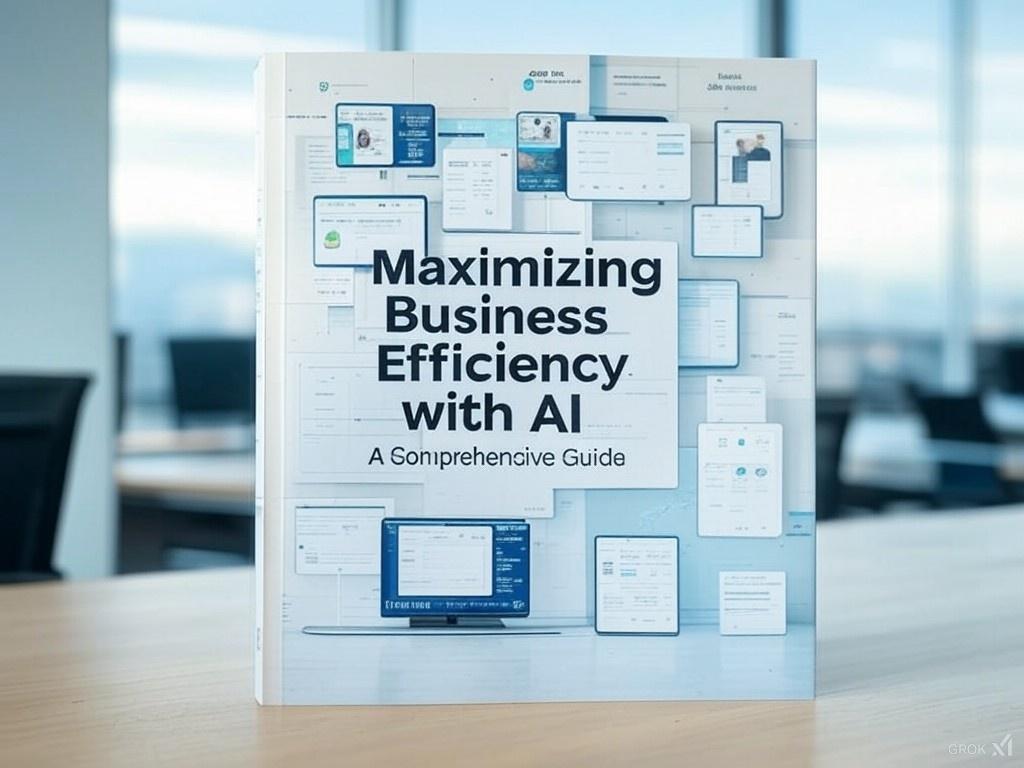Focus Areas: Fraud Detection and Regulatory Compliance
As the financial sector grapples with increasingly sophisticated threats and ever-expanding regulatory requirements, Artificial Intelligence (AI) presents a powerful solution. Fraud detection and regulatory compliance are two areas where conventional methods can be augmented with AI. Below is an overview of the organisational need, strategic alignment, financial viability, testing approach, and associated risks.
1. Need: Tackling Problems Beyond Conventional Capabilities
Fraud Detection
Traditional fraud detection is done with static thresholds and known fraud patterns. This is difficult to keep up to date and accurate. In contrast, AI uses machine learning to detect subtle, emergent fraud patterns in real-time.
For example, HSBC implemented an AI-based fraud detection system using Feedzai, which combines historical transaction data with behavioural analytics to flag anomalous behaviour. This system reduced false positives by over 60% while improving detection accuracy (McKinsey, 2020).
Regulatory Compliance
Compliance officers are overwhelmed by the sheer volume and complexity of regulatory texts—often running into thousands of pages, changing frequently, and varying across jurisdictions. Manually tracking and interpreting these regulations is resource-intensive and error-prone.
Natural Language Processing (NLP), a branch of AI, can scan, summarise, and extract obligations from legislation or regulatory updates. For instance, JP Morgan’s COiN (Contract Intelligence) platform uses NLP to review commercial contracts, completing in seconds what took legal teams 360,000 hours annually (JP Morgan, 2017).
2. Alignment with Organisational Strategy
Both fraud prevention and compliance management are strategic imperatives for financial institutions, directly tied to trust, reputation, and operational resilience.
- Customer Trust & Risk Reduction: By using AI to detect fraud earlier and more accurately, banks improve client confidence and reduce loss, generating a strategic shift toward proactive risk management.
- Efficiency & Agility: AI streamlines compliance processes, enabling faster adaptation to new regulations—critical in markets like the EU and UK where regulatory change is constant. This fits within most institutions’ digital transformation roadmaps and ESG goals.
3. Financial Viability
AI implementation costs include infrastructure, model development, regulatory integration, and talent. However, these are quickly offset by savings and revenue protection:
- Fraud Cost Savings: Global losses from payment fraud alone exceeded $42 billion in 2022 (Nilson Report, 2023). Reducing even a fraction of this through AI brings strong ROI.
- Compliance Efficiency: According to Thomson Reuters, large firms spend up to 10% of their revenue on compliance. Automating even 20–30% of compliance review tasks through AI tools like Ayasdi or WorkFusion can result in millions in savings annually.
In 2020, ING used AI to reduce the average time required to assess anti-money laundering (AML) alerts from 2 hours to 5 minutes, yielding a 93% time saving (ING Case Study).
4. Testing for Business Fit
Strong testing strategies are essential to ensure AI systems meet business and regulatory standards:
- Pilot Testing: Implement AI for a specific fraud type (e.g. card-not-present fraud) or regulation (e.g. MiFID II trade reporting). Monitor false positive rates and alert quality.
- Regulatory Sandboxes: In the UK, the Financial Conduct Authority (FCA) offers a regulatory sandbox for banks to trial AI-driven compliance tools in a controlled environment (FCA Innovation Hub).
- Explainability & Auditability Testing: Use XAI (eXplainable AI) frameworks to ensure decisions are transparent and traceable.
5. Analyse: Risks and Mitigation
Model Bias & Fairness
AI systems may learn historical biases. This can be mitigated through fairness-aware training, use of synthetic datasets, and audits.
Black Box Risk
Regulators increasingly require explainable decisions. Using interpretable models or explainability tools like SHAP (SHapley Additive exPlanations) or LIME (Local Interpretable Model-agnostic Explanations) can make AI more transparent.
Data Privacy
AI systems must comply with GDPR and other data privacy laws. Data anonymisation, federated learning, and strong governance policies are key safeguards.
Overfitting or Model Drift
Models trained on historical data can become less accurate over time. Continuous monitoring and retraining schedules help maintain model integrity.
Conclusion
AI offers transformative value for large financial organisations, particularly in fraud detection and compliance. With successful real-world examples from global banks, a clear alignment with strategic goals, strong financial justification, and structured testing and governance, AI implementation is not only viable but vital. When thoughtfully applied, AI can redefine how financial institutions protect, comply, and compete.



